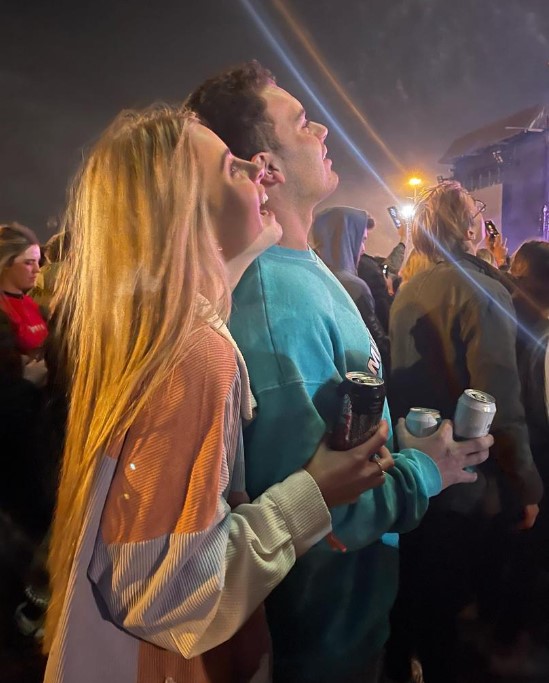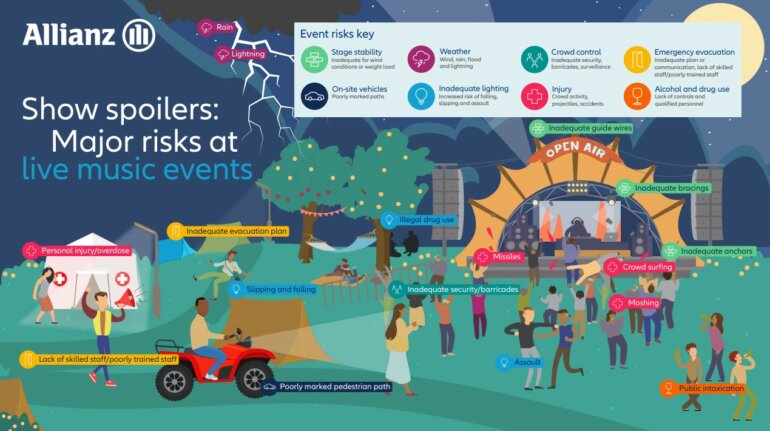New boom and new risks at live concerts and festivals
- Concert and festival promoters look forward to a new boom in live events after lockdowns and restrictions end.
- Staff shortages and resource constraints lead to new risks and longer planning times.
- New risk assessment required for concerts in newly used venue.
Following the end of the lockdowns and restrictions, concert and festival players are looking forward to a new boom. “We are currently seeing a huge demand for live events,” reports Michael Furtschegger, Global Head of Entertainment at Allianz Global Corporate & Specialty (AGCS), “fan hunger for live events is high and the larger promoters are seeing record numbers.”
New circumstances, new risks
However, the risk landscape of live entertainment also poses new challenges for event organizers. Like many other industries, the entertainment sector is facing shortages of skills. According to a survey by the Professional Light And Sound Organization (PLASA), nearly 70% of companies surveyed at the end of 2021 reported a shortage of skilled workers. Engineers, technicians, and height workers in stage technology were most sought after.
 “Staff shortages can become a particularly acute problem when it comes to safety personnel,” Furtschegger says. “In some cases, it can mean that authorities won’t allow an event to take place. In terms of other safety-critical tasks, organizers need to make sure they properly vet vendors and contractors to ensure the event is run professionally. ”
“Staff shortages can become a particularly acute problem when it comes to safety personnel,” Furtschegger says. “In some cases, it can mean that authorities won’t allow an event to take place. In terms of other safety-critical tasks, organizers need to make sure they properly vet vendors and contractors to ensure the event is run professionally. ”
In addition to staff shortages, resource constraints could also become a problem for the industry. “As more performances take place and productions run in parallel, the demand for touring equipment increases, often rented from rental companies with limited resources. Ideally, this requires thorough planning for equipment purchases. The same is true for repairs and spare parts.
The global semiconductor shortage has eased for the moment, but if there are shortages of other components, or if restrictions are imposed on moving goods in and out of ports due to lockdowns or the war in Ukraine, organizers will have to accept longer delivery times and plan for more contingencies. This also extends planning times,” explains Furtschegger.
In addition, the many new festivals that are currently emerging require a new risk assessment. “The industry is innovative. In recent years we have seen successful events in new venues, which have been put to new uses by live events. Organizers of established festivals like Coachella in the US, National Arts Festival in South Africa, Afro Nation in Portugal, Tomorrowland in Belgium, or Rock am Ring in Germany will be relatively familiar with their venues’ risks. However, new and untested venues require a different risk assessment,” says Furtschegger.
Despite some of these challenges, the entertainment industry is optimistic about the future: “I am confident that the live entertainment events sector will continue to flourish. I believe their ingenuity, creativity, and energy will lead them into a bright future.”




